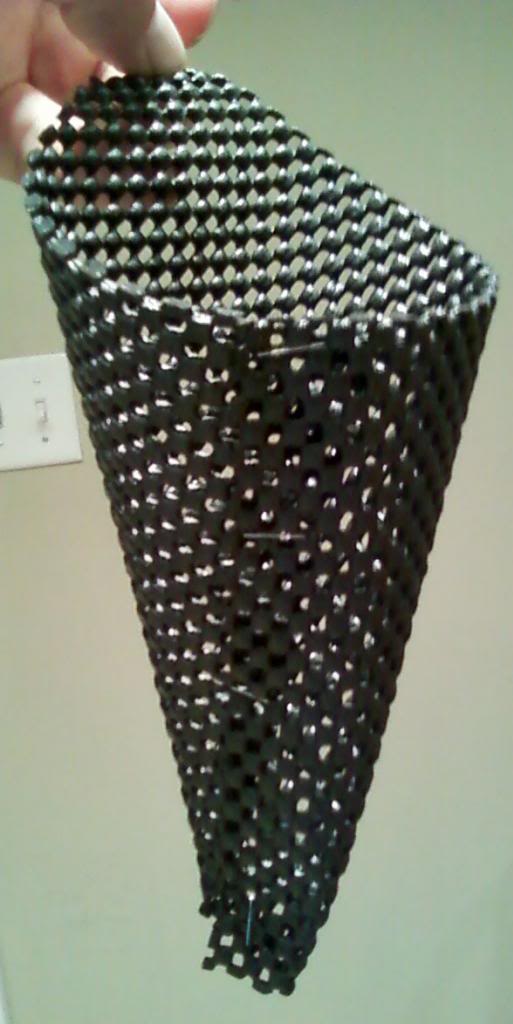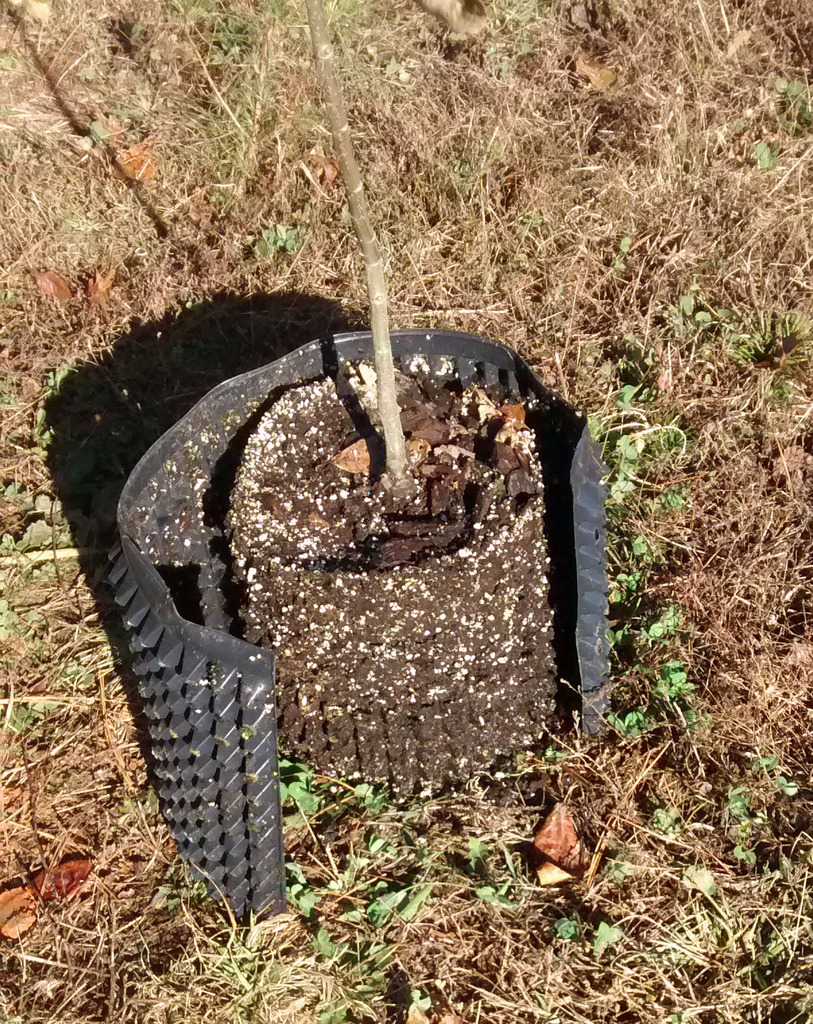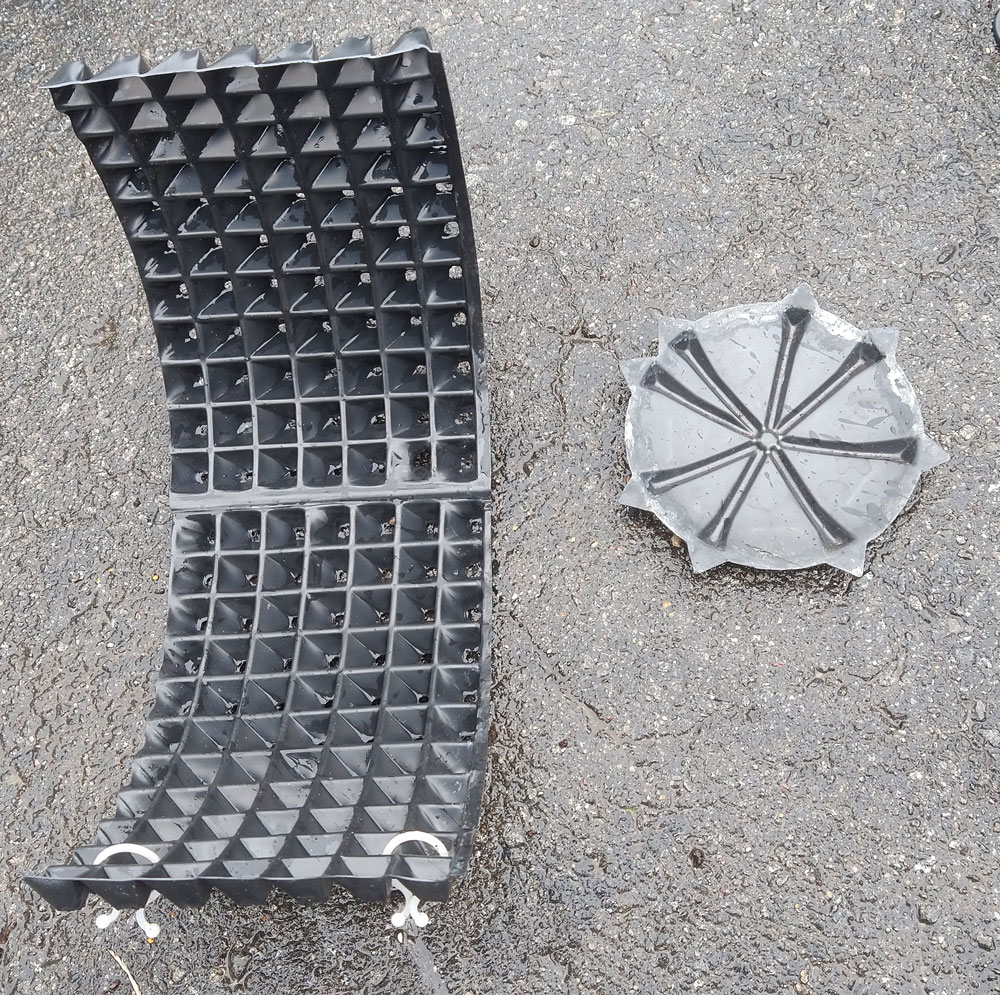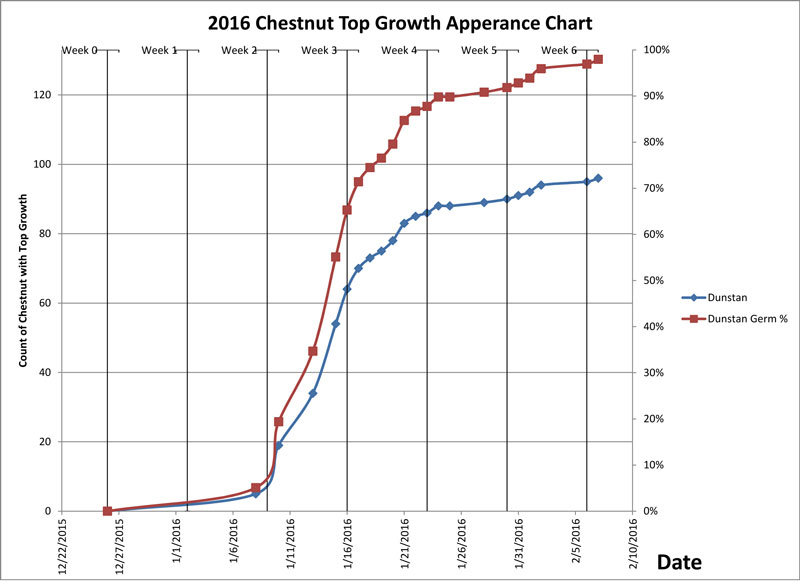By the way, I avoid potting soil like miracle grow and similar mixes for rootmakers. They are too fine and hold water too long for chestnuts. With rootmakers you want a chunkier mix like Promix. It works better for soaking and letting chestnuts dry out. The voids in the mix give the many lateral root tips created by root pruning a place to fill.
This is not to say, you can't uses potting soil or even native soil. Trees can do amazing things under harsh conditions. I'm just talking about best practices to maximize growth and give your seedlings the best chance.
Here is a quick summary on the root pruning technique for those new to this:
Dr. Witcomb was the primary pioneer in this technique and he has some good articles you can read, but here is a short description. There are several methods that can be use for root pruning, air pruning, root trapping, and root constriction. Rootmaker makes containers for all of these. For my purposes, I found air pruning to be the best fit for my situation.
Nutrients and water are taken up by the tree by the fine terminal roots. The more of these fine root tips, the more water and nutrients a tree can uptake. In nature, a seedling sacrifices growth early on putting a lot of energy into producing a deep tap root. It does this so that it can get access to water when the top layer of soil dries out. This means it puts less energy into producing fine root tips and producing top growth.
With root pruning, we are making a trade-off. When we prune the tap root, it forces the tree to do upstream branching. Most of this occurs in the first 4" of the prune. With air pruning, 18s are designed to force roots downward to holes in the bottom of the container. The cells are elevated so there is good air flow below the container. When the tap root hits the air, it desiccates which forces upstream branching. These lateral branches grow outward until they hit the angled container walls and are forced down to wholes where they are pruned. They too then have upstream branching and so on.
Since we are providing water and nutrients, all these additional terminal root tips uptake more nutrients. Since the tree can't put energy into the tap root, it puts more energy into both top growth and lateral branching. We thus get much faster growth, but we need to provide the nutrients and water.
When the 18s are filled with roots, we transplant to the 1 or 3 gal containers. I like to use both, but some go directly to 3 gal. When you try to plant from a smaller container, although the seedling is larger the root system is not very deep. While the root system is dense and very efficient, it can only uptake what it can reach. When the top layer of soil dries out the tree is in trouble unless you are providing supplemental water. The depth of the final container is dependent on how much your soil dries out and for how long if you don't provide water.
In my area 3 gal is deep enough given our climate. Keep in mind that if you are in an area that is more arid, root pruning may not be the best option. Direct seeding may be a better option. Growth will be slower, but a deep tap root ensures survival during long dry periods.





